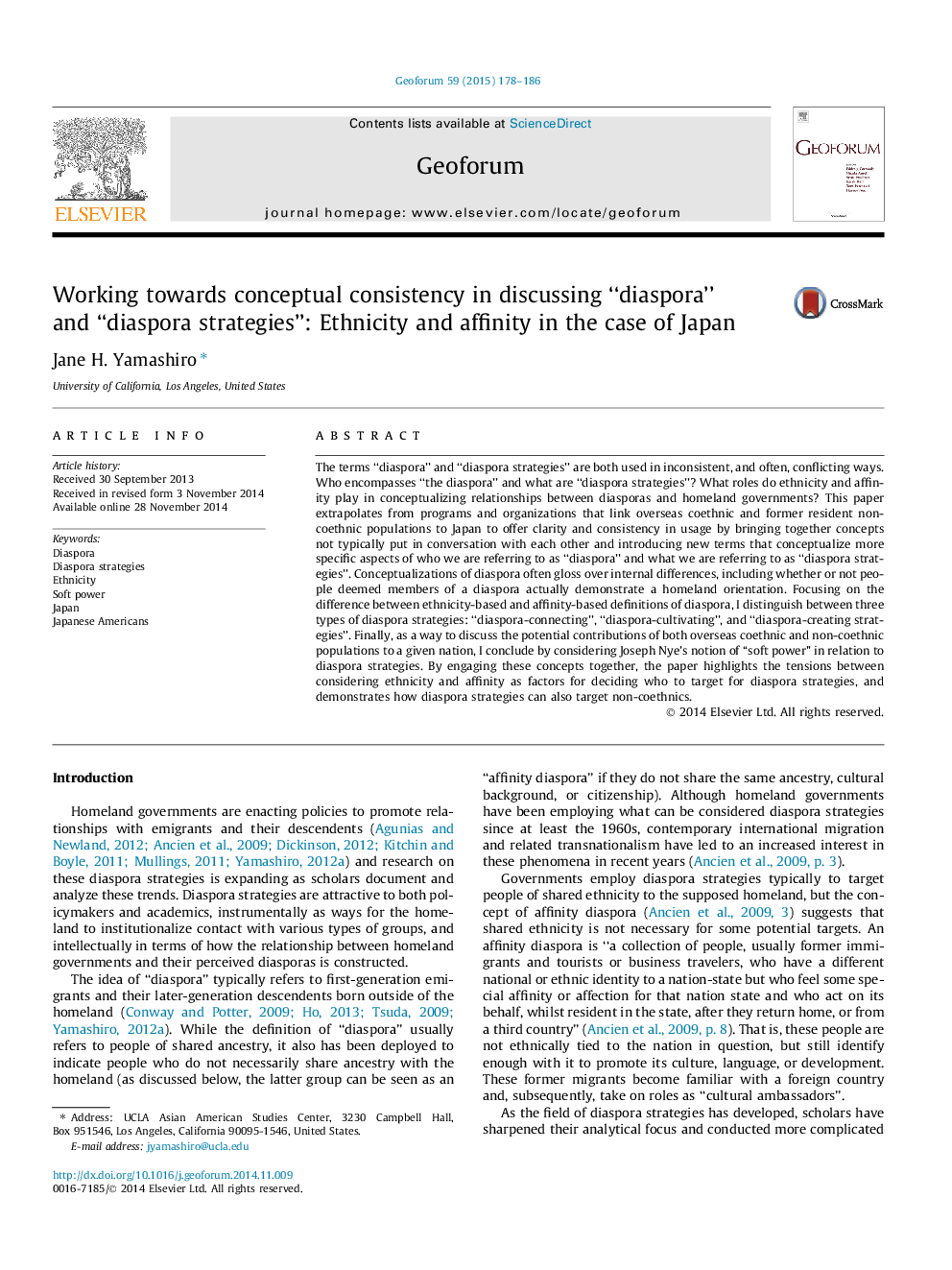| Article ID | Journal | Published Year | Pages | File Type |
|---|---|---|---|---|
| 5073980 | Geoforum | 2015 | 9 Pages |
Abstract
The terms “diaspora” and “diaspora strategies” are both used in inconsistent, and often, conflicting ways. Who encompasses “the diaspora” and what are “diaspora strategies”? What roles do ethnicity and affinity play in conceptualizing relationships between diasporas and homeland governments? This paper extrapolates from programs and organizations that link overseas coethnic and former resident non-coethnic populations to Japan to offer clarity and consistency in usage by bringing together concepts not typically put in conversation with each other and introducing new terms that conceptualize more specific aspects of who we are referring to as “diaspora” and what we are referring to as “diaspora strategies”. Conceptualizations of diaspora often gloss over internal differences, including whether or not people deemed members of a diaspora actually demonstrate a homeland orientation. Focusing on the difference between ethnicity-based and affinity-based definitions of diaspora, I distinguish between three types of diaspora strategies: “diaspora-connecting”, “diaspora-cultivating”, and “diaspora-creating strategies”. Finally, as a way to discuss the potential contributions of both overseas coethnic and non-coethnic populations to a given nation, I conclude by considering Joseph Nye's notion of “soft power” in relation to diaspora strategies. By engaging these concepts together, the paper highlights the tensions between considering ethnicity and affinity as factors for deciding who to target for diaspora strategies, and demonstrates how diaspora strategies can also target non-coethnics.
Related Topics
Social Sciences and Humanities
Economics, Econometrics and Finance
Economics and Econometrics
Authors
Jane H. Yamashiro,
